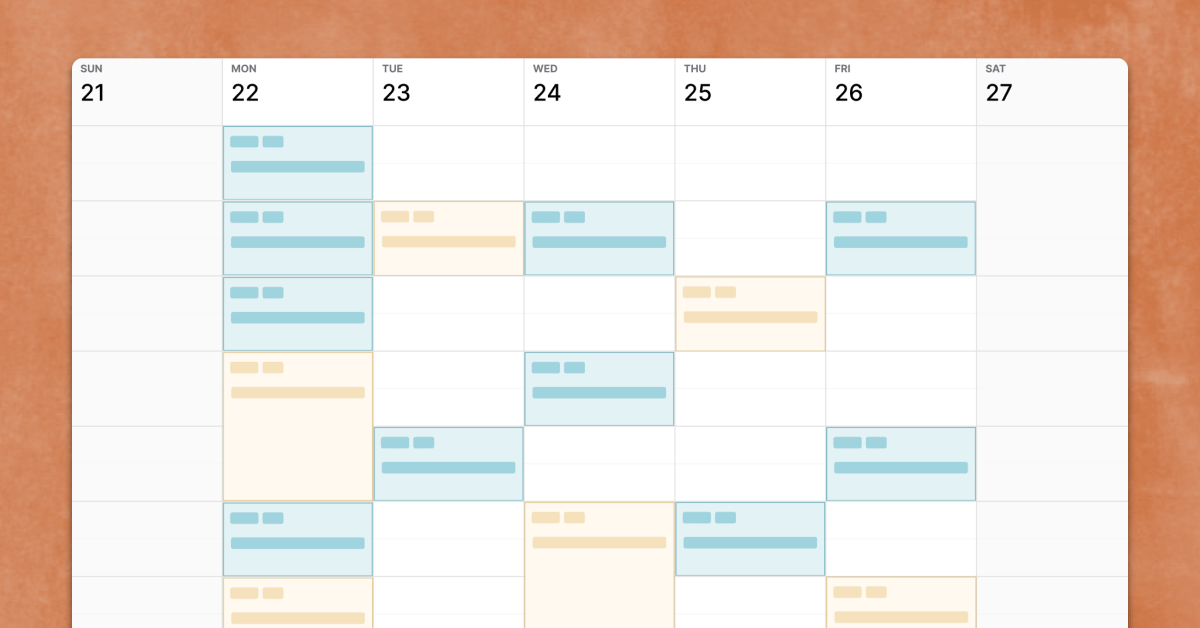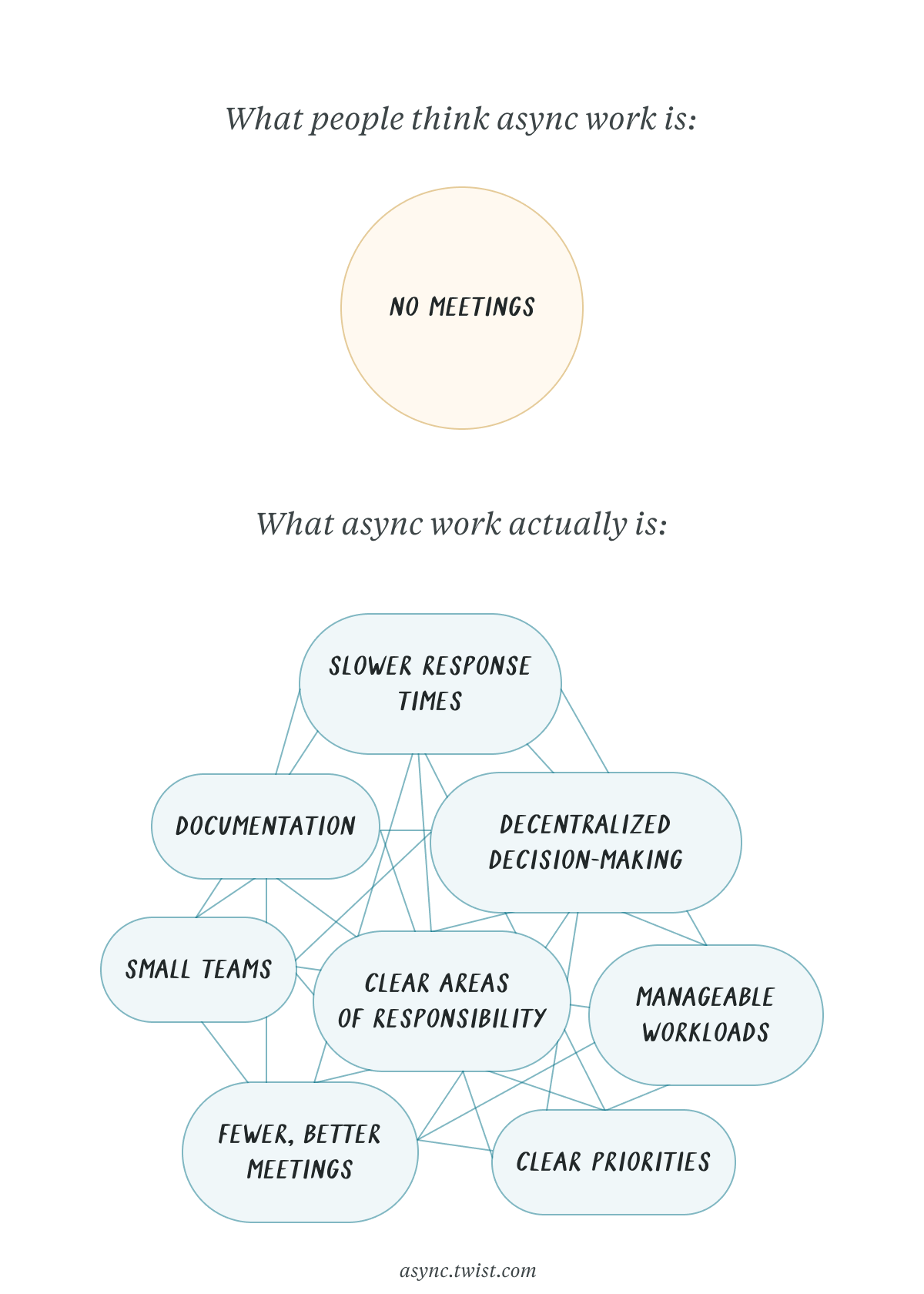A nasty cold derailed my plans to hit the ground running in 2023, but, as Oliver Burkeman would say, now that I've completely and utterly failed in my "unwisely perfectionistic" visions for the new year, I can get down to the much more realistic — and ultimately more joyful — work of simply doing what I can with the time and energy I have.
(Or at least, that's what I've been telling myself.)
In today's newsletter, I dig into e-commerce giant Shopify's own wild start to the new year and why I think async work experiments often fail. But first, don't miss our latest spotlight on how SparkToro VP of Marketing Amanda Natividad works async.
Until next time,
Becky and the Twist team

The internet (or at least the business-y corner of it) has been buzzing with Shopify’s audacious plan to boost worker productivity and turn the page on what had been a rough year for tech company valuations.
As employees returned from their holiday break, the company’s leadership fired the first shot in an all-out war on meetings, and boy was it a doozy:
Effective immediately, all recurring meetings with more than 2 people would be automatically removed from company calendars – canceling 76,500 hours of meetings per year in one fell swoop.
This hard-line anti-meeting policy — designed to give people back time for focused work – also included:
- A 2-week cooling off period before any meetings are put back on the schedule
- Moving all large meetings of 50+ people to the same 6-hour window on Thursdays
- Reupping a rule that no meetings at all can be held on Wednesdays
Given the masthead of this newsletter, you’d think I would applaud the move. But I’m skeptical it will have the kind of lasting impact on employee engagement and productivity that Shopify’s leadership team is aiming for.
You may have noticed that Shopify “reupped” No Meeting Wednesdays. A friend of mine who worked there told me that it was an open secret that everyone scheduled meetings on Wednesdays anyway because it was the only time that wasn’t already taken up with meetings.
Without bigger, deeper changes to company culture and operations, there’s no reason to think the same meeting creep won’t simply happen again. Or worse, that communication will be pushed into even more fragmented, distracting, and ultimately unproductive forms.
All that communication will go somewhere
We generally think of habits on the individual level, but team culture manifests as a collection of shared and mutually reinforced habits, too. Every habit consists of a trigger and a response. For example:
Have information to share → Have a meeting
Feeling unaligned as a team → Have a meeting
Need to make a decision → Have a meeting
You get the idea.
Undoubtedly, some of Shopify’s 76,500 hours of meetings won’t be missed. But those meetings were put on the calendar for a reason. Those triggers aren’t going anywhere. As any student of habit change will tell you, bad habits aren’t extinguished — they’re replaced.
That communication is going to shift somewhere else, following the path of least resistance — in Shopify’s case that likely means Slack, a platform that makes digital communication fast and easy but simply wasn’t built for longer-form, longer-term conversations, burying important topics almost as soon as they’re discussed.
Interestingly, Shopify’s policy did include a nod to shifting the company’s relationship with Slack by “encouraging employees to leave large group chats” and turning those channels into “announcement-only” spaces. But that’s as far as they went in reining in the company’s reliance on instant messaging.
Shopify may achieve their goal of drastically reducing meetings, but if everyone ends up just responding to Slack chats all day, people may end up more distracted and overwhelmed than ever.
Async isn’t (just) a lack of meetings

As Doist’s Head of Remote, Chase Warrington recently pointed out in an internal Twist thread regarding our own approach to meetings, “Having as little meeting time as possible is a vanity metric – not the end goal.” The goal is to create a balance between effective collaboration and uninterrupted time for deep thought and focused work.
Having as little meeting time as possible is a vanity metric – not the end goal.
Reducing meetings is just one piece of creating an async-first culture. Other pieces that are harder but even more important in having a lasting impact on engagement and productivity:
- Decentralizing decision-making so people don’t have to wait for permission and deliberation before acting
- Delineating clear areas of responsibility so people feel individual ownership to move work forward
- Keeping teams as small as possible to cut down on communication overhead
- Accepting — and encouraging — slower response times to emails and messages so that people can close out their communication apps and block off their most productive hours for uninterrupted work
- Teaching people how to effectively communicate information, ask for and give feedback, and make decisions asynchronously — and giving them the tools to do so
- Managing workloads and setting clear priorities so people have the time and mental space to focus on what will have the most impact
- Creating a system and culture of documentation so people can find the information they need without having to ask for it
- Recognizing when meetings really are the best way to accomplish your goal and teaching people how to do them well
- Creating intentional space for teammates to connect and build social capital
For the record, I’m rooting for Shopify to succeed. They’re a bold company that’s not afraid to shake things up and accept that uncertainty is part of the process. I admire their CEO and fully agree with his reasoning behind the move:
"The best thing founders can do is subtraction. It’s much easier to add things than to remove things. If you say yes to a thing, you actually say no to every other thing you could have done with that period of time. As people add things, the set of things that can be done becomes smaller. Then, you end up with more and more people just maintaining the status quo.”
But any strategy that myopically focuses on canceling meetings from the top down without a more nuanced, holistic, and inclusive approach to what will replace them risks falling back into old, or even worse, habits. It’s easy to wipe meeting time off the calendar – it’s much harder to build up an async-first culture, system, and habits to replace it.
We have some ideas from our experience at Doist, but we certainly don’t have all the answers. And what works for our team might not work for you. That’s why I want to co-create these playbooks with you! Make sure you’re subscribed to the newsletter and keep an eye out for member threads on what has (and hasn’t) worked for you when it comes to creating a more async workplace.
3 things worth sharing
- GitLab on Directly Responsible Individuals and Asana on Areas of Responsibility – two takes on a simple concept coined at Apple that we've also adopted at Doist as DRDs (Directly Responsible Doisters). In my opinion, it's an absolutely essential tool for making any kind of collaborative work – but particuarly async work – effective.
- Self care and stress management for product leaders – a presentation by Doist's Head of Product Dominique Jost on avoiding burnout by building what he calls a "bulletproof soul". (Not just for product leaders!)
- What's the least amount of activity needed to counteract the health impact of a workday filled with sitting? New research has a very specific answer: 5 minutes of walking for every 30 minutes spent sitting. Yet another compelling reason to use the Pomodoro Technique.
- Bonus: It's Japanese composer Ryuichi Sakamoto’s birthday today 🥳 Turns out he has an album from 2017 called async, in case you're looking for an eery, atmospheric soundtrack to your workday. I'm not sure it's my jam, but I can't seem to turn it off.
What’s Twist? Twist is an async messaging app for teams burned out by real-time chat, meetings, and email.
You don’t need to use Twist to get a ton of value out of this newsletter and community. But if the topics we talk about resonate with you, there’s a good chance the app will too. See what makes Twist different →
🌎 Built asynchronously by the fully remote team at Doist
